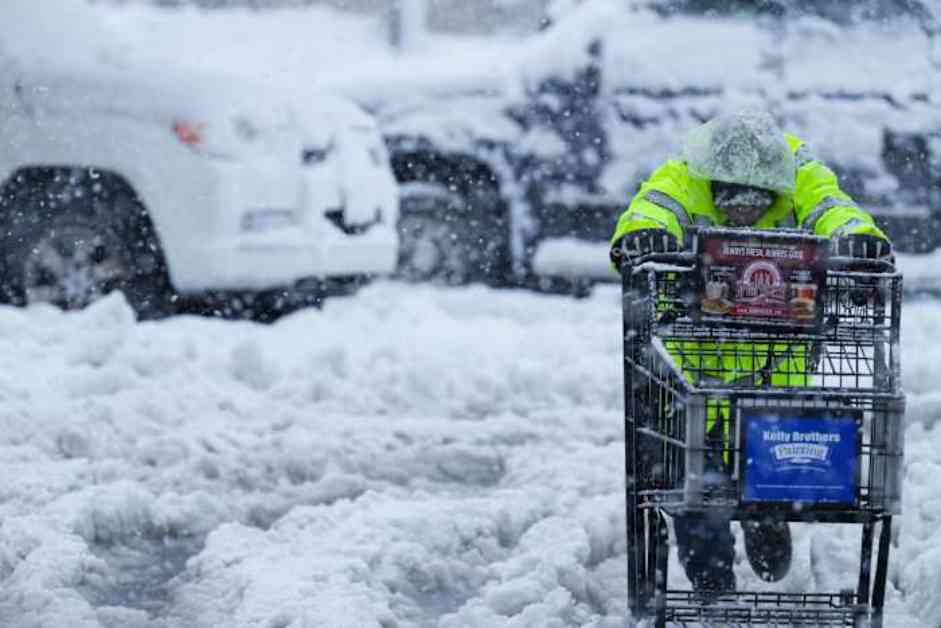Southern California experienced a deluge of heavy rains on Thursday, sparking destructive debris flows in wildfire-scarred areas that posed a significant threat to the region. As the storm battered the West Coast, it left a trail of chaos and destruction in its wake, impacting various communities and roadways across California, Oregon, and Washington. The aftermath of the storm revealed the vulnerability of areas ravaged by wildfires, as rock and mudslides became a looming danger for residents and emergency responders.
Los Angeles, a city familiar with the devastation caused by wildfires, faced the brunt of the storm’s wrath as the rain triggered flash floods and severe thunderstorms in eastern Los Angeles County. The National Weather Service issued warnings as the downpour intensified, causing rockslides, mudflows, and debris across several neighborhoods. In Malibu Canyon, the heavy rain pushed mud onto the road, while the Hollywood Hills were left buried under 8 inches of sludge, highlighting the immediate impact of the storm on urban areas.
The risk of debris flows was particularly high in areas scarred by recent wildfires, such as the Palisades Fire and the Eaton Fire zones. The fires not only destroyed vegetation crucial for soil stability but also left loose debris, including ash and rocks, susceptible to being washed away by heavy rains. Southern California, already grappling with extreme drought conditions, faced a delicate balance as the storm brought much-needed rain but also posed a threat of too much, too quickly. Residents like Mehran Daoudian in Altadena took precautionary measures to protect their homes and belongings, recognizing the potential dangers posed by mudslides and flooding in their neighborhoods.
Further north, in Oregon and Washington, the storm manifested in the form of snow and ice, leading to major pileups on highways and causing injuries to several individuals. The Pacific Northwest was not spared from the storm’s impact, with near-whiteout conditions contributing to accidents and road closures. First responders scrambled to assist those caught in the chaos, highlighting the urgency and unpredictability of severe weather events in the region.
As the storm swept across the West Coast, it left a trail of destruction in its wake, affecting communities from California to Washington. The challenges posed by extreme weather events underscored the importance of preparedness and resilience in the face of natural disasters. While the rain brought relief to drought-stricken areas, it also served as a stark reminder of the fragility of ecosystems and infrastructure in the wake of wildfires and other environmental crises.
In the midst of the storm’s fury, communities banded together to support one another, with emergency responders working tirelessly to ensure the safety of residents and mitigate the impact of the weather. The resilience and spirit of those affected by the storm shone through, underscoring the human capacity to adapt and overcome adversity in the face of nature’s forces.
As the storm subsided and residents began to assess the damage, the West Coast braced for the ongoing challenges posed by extreme weather events and the need for long-term solutions to mitigate the impact of future disasters. The storm served as a sobering reminder of the interconnectedness of environmental, social, and infrastructural systems, highlighting the need for coordinated efforts to build more resilient communities in the face of a changing climate.















